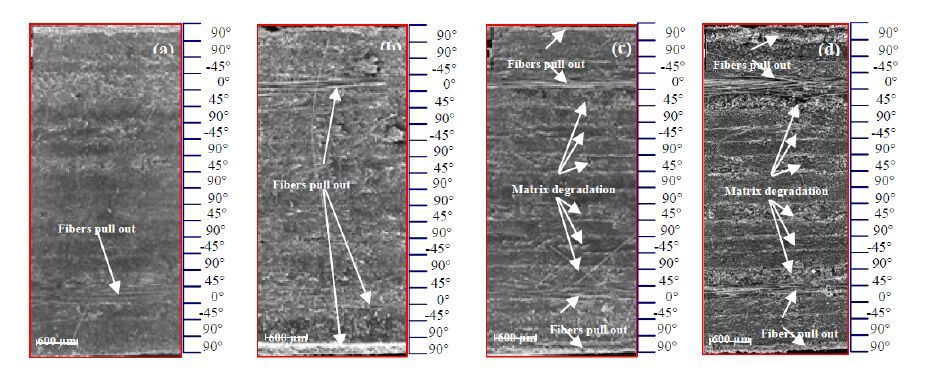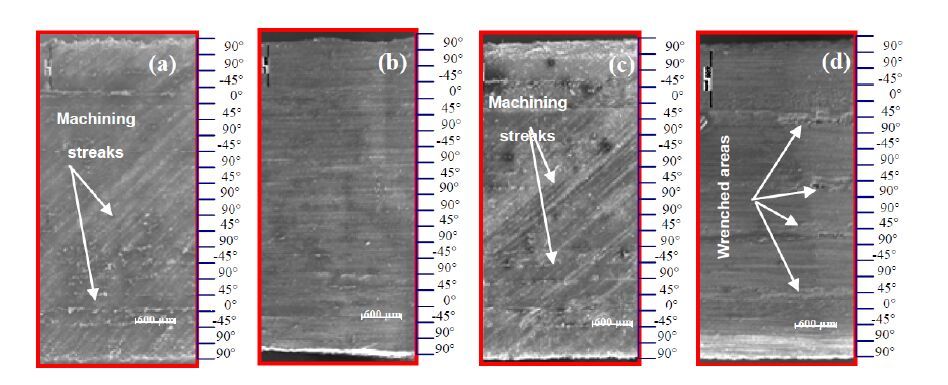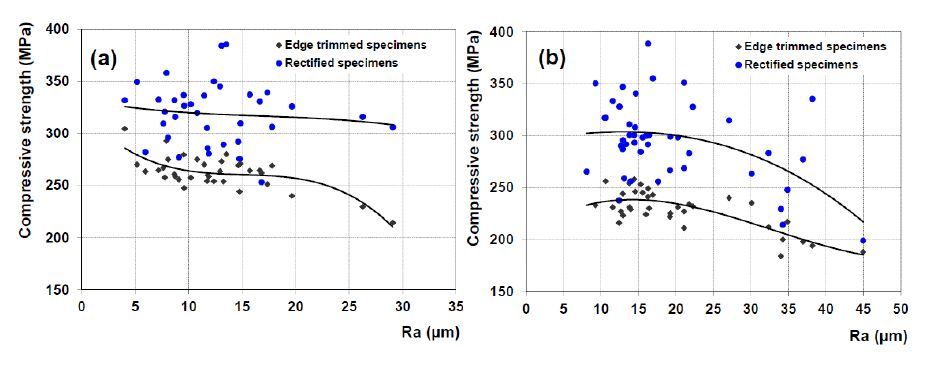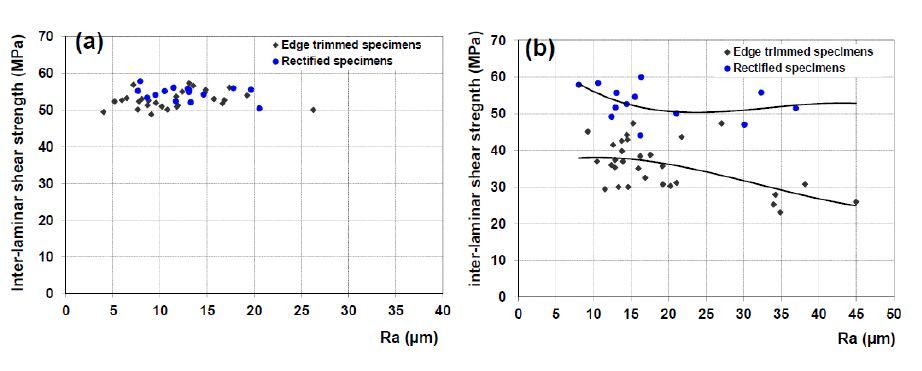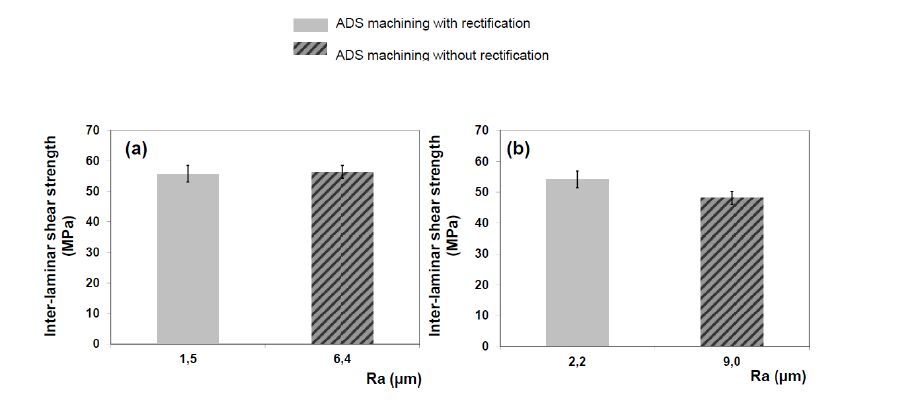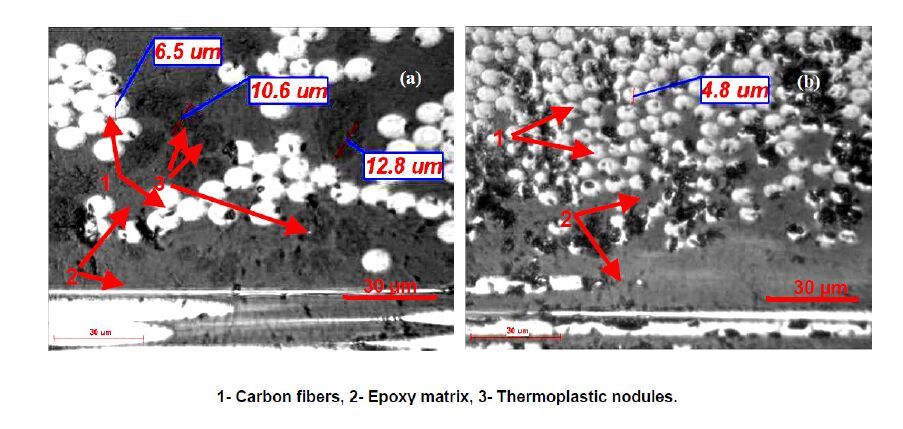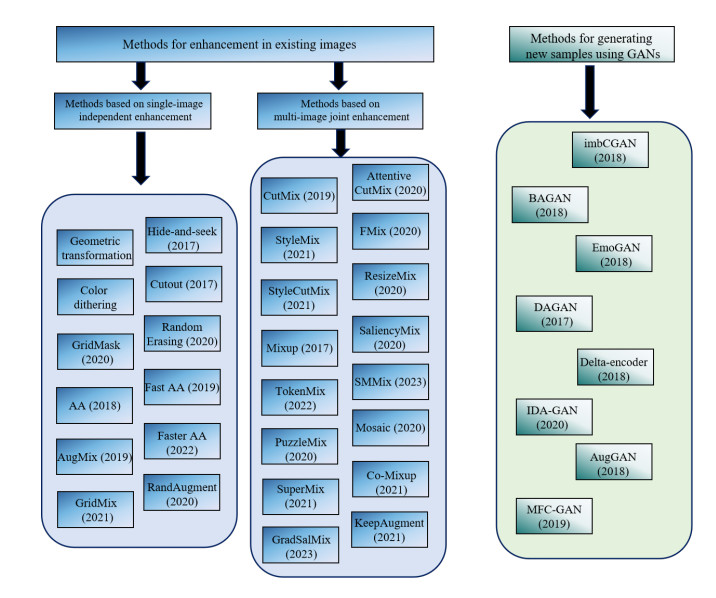|
[1]
|
P. Li, Y. Zhang, L. Yuan, H. X. Xiao, B. B. Lin, X. H. Xu, Efficient long-short temporal attention network for unsupervised video object segmentation, Pattern Recogn., 146 (2024), 110078. https://doi.org/10.1016/j.patcog.2023.110078 doi: 10.1016/j.patcog.2023.110078

|
|
[2]
|
E. Moen, D. Bannon, T. Kudo, W. Graf, M. Covert, D. Van Valen, Deep learning for cellular image analysis, Nat. Methods, 16 (2019), 1233–1246. https://doi.org/10.1038/s41592-019-0403-1 doi: 10.1038/s41592-019-0403-1

|
|
[3]
|
L. Chena, P. Bentley, K. Mori, K. Misawa, M. Fujiwara, D. Rueckert, Self-supervised learning for medical image analysis using image context restoration, Med. Image Anal., 58 (2019). https://doi.org/10.1016/j.media.2019.101539 doi: 10.1016/j.media.2019.101539

|
|
[4]
|
Y. A. Nanehkaran, D. F. Zhang, J. D. Chen, Y. Tian, N. Al-Nabhan, Recognition of plant leaf diseases based on computer vision, J. Ambient Intell. Human. Comput., (2020), 1–18. https://doi.org/10.1007/s12652-020-02505-x doi: 10.1007/s12652-020-02505-x

|
|
[5]
|
M. Wankhade, A. C. S. Rao, C. Kulkarni, A survey on sentiment analysis methods, applications, and challenges, Artif. Intell. Rev., 55 (2022), 5731–5780. https://doi.org/10.1007/s10462-022-10144-1 doi: 10.1007/s10462-022-10144-1

|
|
[6]
|
D. M. E. D. M. Hussein, A survey on sentiment analysis challenges, J. King Saud Univ. Eng. Sci., 30 (2018), 330–338. https://doi.org/10.1016/j.jksues.2016.04.002 doi: 10.1016/j.jksues.2016.04.002

|
|
[7]
|
K. R. Chowdhary, Natural language processing, in Fundamentals of Artificial Intelligence, Springer, (2020), 603–649. https://doi.org/10.1007/978-81-322-3972-7_19
|
|
[8]
|
V. Raina, S. Krishnamurthy, Natural language processing, in Building an Effective Data Science Practice, Springer, (2022), 63–73. https://doi.org/10.1007/978-1-4842-7419-4_6
|
|
[9]
|
M. Malik, M. K. Malik, K. Mehmood, I. Makhdoom, Automatic speech recognition: A survey, Multimed. Tools Appl., 80 (2021), 9411—9457. https://doi.org/10.1007/s11042-020-10073-7 doi: 10.1007/s11042-020-10073-7

|
|
[10]
|
D. Wang, X. D. Wang, S. H. Lv, An overview of end-to-end automatic speech recognition, Symmetry, 11 (2019), 1018. https://doi.org/10.3390/sym11081018 doi: 10.3390/sym11081018

|
|
[11]
|
L. Deng, X. Li, Machine learning paradigms for speech recognition: An overview, IEEE Trans. Audio, 21 (2013), 1060–1089. https://doi.org/10.1109/TASL.2013.2244083 doi: 10.1109/TASL.2013.2244083

|
|
[12]
|
X. Tan, T. Qin, F. Soong, T. Y. Liu, A survey on neural speech synthes, preprint, arXiv: 2106.15561.
|
|
[13]
|
V. Mario, G. Angiulli, P. Crucitti, D. D. Carlo, F. Laganà, D. Pellicanò, et al., A fuzzy similarity-based approach to classify numerically simulated and experimentally detected carbon fiber-reinforced polymer plate defects, Sensors, 22 (2022), 4232. https://doi.org/10.3390/s22114232 doi: 10.3390/s22114232

|
|
[14]
|
M. Versaci, G. Angiulli, P. D. Barba, F. C. Morabito, Joint use of eddy current imaging and fuzzy similarities to assess the integrity of steel plates, Open Phys., 18 (1) (2020), 230–240. https://doi.org/10.1515/phys-2020-0159 doi: 10.1515/phys-2020-0159

|
|
[15]
|
W. Zeng, H. L. Zhu, C. Lin, Z. Y. Xiao, A survey of generative adversarial networks and their application in text-to-image synthesis, Elect. Res. Arch., 31 (2023), 7142–7181. https://doi.org/10.3934/era.2023362 doi: 10.3934/era.2023362

|
|
[16]
|
I. Goodfellow, P. A. Jean, M. Mirza, B. Xu, D. Warde-Farley, S. Ozair, et al., Generative adversarial nets, in 2014 Advances in Neural Information Processing Systems (NIPS), 27 (2014), 1–9.
|
|
[17]
|
T. Y. Lin, M. Maire, S. Belongie, J. Hays, P. Perona, D. Ramanan, et al., Microsoft COCO: Common objects in context, in 2014 European conference computer vision (ECCV), (2014), 740–755. https://doi.org/10.1007/978-3-319-10602-1_48
|
|
[18]
|
J. Zou, M. Huss, A. Abid, P. Mohammadi, A. Torkamani, A. Telenti, A primer on deep learning in genomics, Nat. Genet., 51 (2019), 12–18. https://doi.org/10.1038/s41588-018-0295-5 doi: 10.1038/s41588-018-0295-5

|
|
[19]
|
A. Borji, S. Izadi, L. Itti, iLab-20M: A large-scale controlled object dataset to investigate deep learning, in 2016 IEEE Conference on Computer Vision and Pattern Recognition (CVPR), (2016), 2221–2230. https://doi.org/10.1109/CVPR.2016.244
|
|
[20]
|
O. Russakovsky, J. Deng, H. Su, J. Krause, S. Satheesh, S. Ma, et al., ImageNet large scale visual recognition challenge, Int. J. Comput. Vis., 115 (2015), 211–252. https://doi.org/10.1007/s11263-015-0816-y doi: 10.1007/s11263-015-0816-y

|
|
[21]
|
K. M. He, X. Y. Zhang, S. Q. Ren, J. Sun, Deep residual learning for image recognition, in 2016 IEEE/CVF Conference on Computer Vision and Pattern Recognition (CVPR), IEEE, (2016), 770–778. https://doi.org/10.1109/CVPR.2016.90
|
|
[22]
|
A. G. Howard, M. L. Zhu, B. Chen, D. Kalenichenko, W. J. Wang, T. Weyand, et al., MobileNets: Efficient convolutional neural networks for mobile vision applications, preprint, arXiv: 1704.04861.
|
|
[23]
|
X. Y. Zhang, X. Y. Zhou, M. X. Lin, J. Sun, ShuffleNet: An extremely efficient convolutional neural network for mobile devices, in 2018 IEEE/CVF Conference on Computer Vision and Pattern Recognition (CVPR), IEEE, (2018), 6848–6856. https://doi.org/10.1109/CVPR.2018.00716
|
|
[24]
|
W. Zeng, Z. Y. Xiao, Few-shot learning based on deep learning: A survey, Math. Biosci. Eng., 21 (2024), 679–711. https://doi.org/10.3934/mbe.2024029 doi: 10.3934/mbe.2024029

|
|
[25]
|
J. Yang, X. M. Wang, Z. P. Luo, Few-shot remaining useful life prediction based on meta-learning with deep sparse kernel network, Inform. Sci., 653 (2024), 119795. https://doi.org/10.1016/j.ins.2023.119795 doi: 10.1016/j.ins.2023.119795

|
|
[26]
|
Y. Q. Wang, Q. M. Yao, J. T. Kwok, L. M. Ni, Generalizing from a few examples: A survey on few-shot learning, ACM Comput. Surveys, 53 (2020), 1–34. https://doi.org/10.1145/3386252 doi: 10.1145/3386252

|
|
[27]
|
C. Shorten, T. M. Khoshgoftaar, A survey on Image Data Augmentation for Deep Learning, J. Big Data, 6 (2019), 60. https://doi.org/10.1186/s40537-019-0197-0 doi: 10.1186/s40537-019-0197-0

|
|
[28]
|
N. E. Khalifa, M. Loey, S. Mirjalili, A comprehensive survey of recent trends in deep learning for digital images augmentation, Artif. Intell. Rev., 55 (2022), 2351-–2377. https://doi.org/10.1007/s10462-021-10066-4 doi: 10.1007/s10462-021-10066-4

|
|
[29]
|
K. Alomar, H. I. Aysel, X. H. Cai, Data augmentation in classification and segmentation: A survey and new strategies, J. Imaging, 9 (2023), 46. https://doi.org/10.3390/jimaging9020046 doi: 10.3390/jimaging9020046

|
|
[30]
|
T. DeVries, G. W. Taylor, Improved regularization of convolutional neural networks with cutout, preprint, arXiv: 1708.04552.
|
|
[31]
|
N. H. Li, S. J. Liu, Y. Q. Liu, S. Zhao, M. Liu, Random erasing data augmentation, in Proceedings of the AAAI Conference on Artificial Intelligence (AAAI), 34 (2020), 13001–13008. https://doi.org/10.1609/aaai.v34i07.7000
|
|
[32]
|
K. K. Singh, Y. J. Lee, Hide-and-Seek: Forcing a network to be meticulous for weakly-supervised object and action localization, in 2017 IEEE International Conference on Computer Vision (ICCV), IEEE, (2017), 3544–3553. https://doi.org/10.1109/ICCV.2017.381
|
|
[33]
|
P. G. Chen, S. Liu, H. S. Zhao, X. G. Wang, J. Y. Jia, GridMask data augmentation, preprint, arXiv: 2001.04086.
|
|
[34]
|
E. D. Cubuk, B. Zoph, D. Mane, V. Vasudevan, Q. V. Le, AutoAugment: Learning augmentation policies from data, preprint, arXiv: 1805.09501.
|
|
[35]
|
S. Lim, I. Kim, T. Kim, C. Kim, S. Kim, Fast autoaugment, in 2019 Advances in Neural Information Processing Systems (NIPS), (2019).
|
|
[36]
|
R. Hataya, J. Zdenek, K. Yoshizoe, H. Nakayama, Faster autoaugment: Learning augmentation strategies using backpropagation, in 2020 European conference computer vision (ECCV), (2022), 1–16. https://doi.org/10.1007/978-3-030-58595-2_1
|
|
[37]
|
E. D. Cubuk, B. Zoph, J. Shlens, Q. V. Le, Faster autoaugment: Learning augmentation strategies using backpropagation, in 2020 IEEE/CVF Conference on Computer Vision and Pattern Recognition Workshops (CVPRW), (2020), 3008–3017. https://doi.org/10.1109/CVPRW50498.2020.00359
|
|
[38]
|
D. Hendrycks, N. Mu, E. D. Cubuk, B. Zoph, J. Gilmer, B. Lakshminarayanan, Augmix: A simple data processing method to improve robustness and uncertainty, preprint, arXiv: 1912.02781.
|
|
[39]
|
K. Baek, D. Bang, H. Shim, GridMix: Strong regularization through local context mapping, Pattern Recogn., 109 (2021), 107594. https://doi.org/10.1016/j.patcog.2020.107594 doi: 10.1016/j.patcog.2020.107594

|
|
[40]
|
S. Yun, D. Han, S. Chun, S. J. Oh, S. Chun, J. Choe, et al., CutMix: Regularization strategy to train strong classifiers with localizable features, in 2019 IEEE/CVF International Conference on Computer Vision (ICCV), IEEE, (2019), 6022–6031. https://doi.org/10.1109/ICCV.2019.00612
|
|
[41]
|
M. Hong, J. Choi, G. Kim, StyleMix: Separating content and style for enhanced data augmentation, in 2021 IEEE/CVF Conference on Computer Vision and Pattern Recognition (CVPR), IEEE, (2021), 14857–14865. https://doi.org/10.1109/CVPR46437.2021.01462
|
|
[42]
|
D. Walawalkar, Z. Q. Shen, Z. C. Liu, M. Savvides, Attentive cutmix: An enhanced data augmentation approach for deep learning based image classification, preprint, arXiv: 2003.13048.
|
|
[43]
|
H. Y. Zhang, M. Cisse, Y. N. Dauphin, D. Lopez-Paz, Mixup: Beyond empirical risk minimization, preprint, arXiv: 1710.09412.
|
|
[44]
|
E. Harris, A. Marcu, M. Painter, M. Niranjan, A. Prügel-Bennett, J. Hare, Fmix: Enhancing mixed sample data augmentation, preprint, arXiv: 2002.12047.
|
|
[45]
|
J. Qin, J. M. Fang, Q. Zhang, W. Y. Liu, X. G. Wang, X. G. Wang, Resizemix: Mixing data with preserved object information and true labels, preprint, arXiv: 2012.11101.
|
|
[46]
|
A. F. M. S. Uddin, M. S Monira, W. Shin, T. C. Chung, S. H. Bae, Saliencymix: A saliency guided data augmentation strategy for better regularization, preprint, arXiv: 2006.01791.
|
|
[47]
|
A. Bochkovskiy, C. Y. Wang, H. Y. M. Liao, Yolov4: Optimal speed and accuracy of object detection, preprint, arXiv: 2004.10934.
|
|
[48]
|
J. H. Liu, B. X. Liu, H. Zhou, H. S. Li, Y. Liu, Tokenmix: Rethinking image mixing for data augmentation in vision transformers, in 2022 European conference computer vision (ECCV), (2022), 455–471. https://doi.org/10.1007/978-3-031-19809-0_26
|
|
[49]
|
M. Z. Chen, M. B. Lin, Z. H. Lin, Y. X. Zhang, F. Chao, R. R. Ji, SMMix: Self-Motivated Image Mixing for Vision Transformers, in 2023 IEEE/CVF Conference on Computer Vision and Pattern Recognition (CVPR), IEEE, (2023), 17214–17224. https://doi.org/10.1109/ICCV51070.2023.01583
|
|
[50]
|
L. F. Yang, X. Li, B. Zhao, R. J. Song, J. Yang, RecursiveMix: Mixed Learning with History, in 2020 Advances in Neural Information Processing Systems (NIPS), (2022), 8427–8440.
|
|
[51]
|
V. Verma, A. Lamb, C. Beckham, A. Najafi, I. Mitliagkas, D. Lopez-Paz, et al., Manifold mixup: Better representations by interpolating hidden states., in Proceedings of the 36th International Conference on Machine Learning (ICML), 97 (2019), 6438–6447.
|
|
[52]
|
J. H. Kim, W. Choo, H. Jeong, H. O. Song, Co-mixup: Saliency guided joint mixup with supermodular diversity, preprint, arXiv: 2102.03065.
|
|
[53]
|
J. H. Kim, W. Choo, H. O. Song, Puzzle mix: Exploiting saliency and local statistics for optimal mixup, in Proceedings of the 37th International Conference on Machine Learning (ICML), 119 (2020), 5275–5285.
|
|
[54]
|
A. Dabouei, S. Soleymani, F. Taherkhani, N. M. Nasrabadi, SuperMix: Supervising the mixing data augmentation, in 2021 IEEE/CVF Conference on Computer Vision and Pattern Recognition (CVPR), IEEE, (2021), 13789–13798. https://doi.org/10.1109/CVPR46437.2021.01358
|
|
[55]
|
C. Y. Gong, D. L. Wang, M. Li, V. Chandra, Q. Liu, KeepAugment: A simple information-preserving data augmentation approach, in 2021 IEEE/CVF Conference on Computer Vision and Pattern Recognition (CVPR), IEEE, (2021), 1055–1064. https://doi.org/10.1109/CVPR46437.2021.00111
|
|
[56]
|
M. Kang, S. Kim, GuidedMixup: An efficient mixup strategy guided by saliency maps, in 2023 Proceedings of the AAAI Conference on Artificial Intelligence (AAAI), (2023), 1096–1104. https://doi.org/10.1609/aaai.v37i1.25191
|
|
[57]
|
T. Hong, Y. Wang, X. W. Sun, F. Z. Lian, Z. H. Kang, J. W. Ma, GradSalMix: Gradient saliency-based mix for image data augmentation, in 2023 IEEE International Conference on Multimedia and Expo (ICME), IEEE, (2023), 1799–1804. https://doi.org/10.1109/ICME55011.2023.00309
|
|
[58]
|
M. Mirza, S. Osindero, Conditional generative adversarial nets, preprint, arXiv: 1411.1784v1.
|
|
[59]
|
A. Odena, C. Olah, J. Shlens, Conditional image synthesis with auxiliary classifier GANs, in 2017 Proceedings of the 34rd International Conference on International Conference on Machine Learning, PMLR, (2017), 2642–2651.
|
|
[60]
|
G. Douzas, F. Bacao, Effective data generation for imbalanced learning using conditional generative adversarial networks, Expert Syst. Appl., 91, (2018), 464–471. https://doi.org/10.1016/j.eswa.2017.09.030
|
|
[61]
|
A. Antoniou, A. Storkey, H. Edwards, Data augmentation generative adversarial networks, preprint, arXiv: 1711.04340.
|
|
[62]
|
G. Mariani, F. Scheidegger, R. Istrate, C. Bekas, C. Malossi, Bagan: Data augmentation with balancing gan, preprint, arXiv: 1803.09655.
|
|
[63]
|
S. W. Huang, C. T. Lin, S. P. Chen, Y. Y. Wu, P. H. Hsu, S. H. Lai, Auggan: Cross domain adaptation with gan-based data augmentation, in 2018 Proceedings of the European Conference on Computer Vision (ECCV), (2018), 731—744. https://doi.org/10.1007/978-3-030-01240-3_44
|
|
[64]
|
X. Y. Zhu, Y. F. Liu, J. H. Li, T. Wan, Z. H. Qin, Emotion classification with data augmentation using generative adversarial networks, in 2018 Advances in Knowledge Discovery and Data Mining (PAKDD), 10939 (2018), 349—360. https://doi.org/10.1007/978-3-319-93040-4_28
|
|
[65]
|
E. Schwartz, L. Karlinsky, J. Shtok, S. Harary, M. Marder, A. Kumar, et al., Delta-encoder: An effective sample synthesis method for few-shot object recognition, in 2018 Advances in Neural Information Processing Systems (NIPS), 31 (2018).
|
|
[66]
|
A. Ali-Gombe, E. Elyan, MFC-GAN: Class-imbalanced dataset classification using multiple fake class generative adversarial network, Neurocomputing, 361 (2019), 212–221. https://doi.org/10.1016/j.neucom.2019.06.043 doi: 10.1016/j.neucom.2019.06.043

|
|
[67]
|
H. Yang, Y. Zhou, Ida-gan: A novel imbalanced data augmentation gan, in 2020 International Conference on Pattern Recognition (ICPR), IEEE, (2020), 8299-8305. https://doi.org/10.1109/ICPR48806.2021.9411996
|
|
[68]
|
A. Krizhevsky, Learning Multiple Layers of Features from Tiny Images, Master's thesis, University of Toronto, 2009.
|
|
[69]
|
J. Deng, W. Dong, R. Socher, L. J. Li, K. Li, F. F. Li, ImageNet: A large-scale hierarchical image database, in 2009 IEEE/CVF Conference on Computer Vision and Pattern Recognition (CVPR), IEEE, (2009), 248–255. https://doi.org/10.1109/CVPR.2009.5206848
|
|
[70]
|
D. Han, J. Kim, J. Kim, Deep pyramidal residual networks, in 2017 IEEE/CVF Conference on Computer Vision and Pattern Recognition (CVPR), IEEE, (2017), 6307–6315. https://doi.org/10.1109/CVPR.2017.668
|
|
[71]
|
A. Mikołajczyk, M. Grochowski, Data augmentation for improving deep learning in image classification problem, in 2018 International Interdisciplinary PhD Workshop (IIPhDW), IEEE, (2018), 117–122. https://doi.org/10.1109/IIPHDW.2018.8388338
|
|
[72]
|
C. Szegedy, V. Vanhoucke, S. Ioffe, J. Shlens, Z. Wojna, Rethinking the inception architecture for computer vision, in 2016 IEEE Conference on Computer Vision and Pattern Recognition (CVPR), IEEE, (2016), 2818–2826. https://doi.org/10.1109/CVPR.2016.308
|
|
[73]
|
G. Ghiasi, T. Y. Lin, Q. V. Le, Dropblock: A regularization method for convolutional networks, in 2018 Advances in Neural Information Processing Systems (NIPS), 31 (2018).
|
|
[74]
|
G. Huang, Y. Sun, Z. Liu, D. Sedra, K. Q. Weinberger, Deep networks with stochastic depth, in 2016 European Conference Computer Vision (ECCV), (2016), 646–661. https://doi.org/10.1007/978-3-319-46493-0_39
|
|
[75]
|
J. J. Bird, C. M. Barnes, L. J. Manso, A. Ekárt, D. R. Faria, Fruit quality and defect image classification with conditional GAN data augmentation, Sci. Hortic., 293 (2022), 110684. https://doi.org/10.1016/j.scienta.2021.110684 doi: 10.1016/j.scienta.2021.110684

|
|
[76]
|
H. M. Gao, J. P. Zhang, X. Y. Cao, Z. H. Chen, Y. Y. Zhang, C. M. Li, Dynamic data augmentation method for hyperspectral image classification based on Siamese structure, J. Sel. Top. Appl. Earth Observ. Remote Sens., 14 (2021), 8063–8076. https://doi.org/10.1109/JSTARS.2021.3102610 doi: 10.1109/JSTARS.2021.3102610

|
|
[77]
|
O. A. Shawky, A. Hagag, E. S. A. El-Dahshan, M. A. Ismail, Remote sensing image scene classification using CNN-MLP with data augmentation, Optik, 221 (2020), 165356. https://doi.org/10.1016/j.ijleo.2020.165356 doi: 10.1016/j.ijleo.2020.165356

|
|
[78]
|
O. O. Abayomi-Alli, R. Damaševičius, S. Misra, R. Maskeliūnas, Cassava disease recognition from low-quality images using enhanced data augmentation model and deep learning, Expert Syst., 38 (2021), e12746. https://doi.org/10.1111/exsy.12746 doi: 10.1111/exsy.12746

|
|
[79]
|
Q. H. Cap, H. Uga, S. Kagiwada, H. Iyatomi, Leafgan: An effective data augmentation method for practical plant disease diagnosis, IEEE Trans. Autom. Sci. Eng., 19 (2022), 1258–1267. https://doi.org/10.1109/TASE.2020.3041499 doi: 10.1109/TASE.2020.3041499

|
|
[80]
|
W. Li, C. C. Gu, J. L. Chen, C. Ma, X. W. Zhang, B. Chen, et al., DLS-GAN: Generative adversarial nets for defect location sensitive data augmentation, IEEE Trans. Autom. Sci. Eng., (2023), 1–17. https://doi.org/10.1109/TASE.2023.3309629
|
|
[81]
|
S. Jain, G. Seth, A. Paruthi, U. Soni, G. Kumar, Synthetic data augmentation for surface defect detection and classification using deep learning, J. Intell. Manuf., 33 (2022), 1007–1020. https://doi.org/10.1007/s10845-020-01710-x doi: 10.1007/s10845-020-01710-x

|
|
[82]
|
Y. L. Wang, G. Huang, S. J. Song, X. R. Pan, Y. T. Xia, C. Wu, Regularizing deep networks with semantic data augmentation, IEEE Trans. Pattern Anal. Mach. Intell., 44 (2021), 3733–3748. https://doi.org/10.1109/TPAMI.2021.3052951 doi: 10.1109/TPAMI.2021.3052951

|
|
[83]
|
B. Zoph, E. D. Cubuk, G. Ghiasi, T. Y. Lin, J. Shlens, Q. V. Le, Learning data augmentation strategies for object detection, in 2020 Proceedings of the European Conference on Computer Vision (ECCV), 12372 (2020), 566—583. https://doi.org/10.1007/978-3-030-58583-9_34
|
|
[84]
|
Y. Tang, B. P. Li, M. Liu, B. Y. Chen, Y. N. Wang, W. L. Ouyang, Autopedestrian: An automatic data augmentation and loss function search scheme for pedestrian detection, IEEE Trans. Image Process., 30 (2021), 8483–8496. https://doi.org/10.1109/TIP.2021.3115672 doi: 10.1109/TIP.2021.3115672

|
|
[85]
|
C. L. Wang, Z. F Xiao, Lychee surface defect detection based on deep convolutional neural networks with gan-based data augmentation, Agronomy, 11 (2021), 1500. https://doi.org/10.3390/agronomy11081500 doi: 10.3390/agronomy11081500

|
|
[86]
|
W. W. Zhang, Z. Wang, C. C. Loy, Exploring data augmentation for multi-modality 3D object detection, preprint, arXiv: 2012.12741.
|
|
[87]
|
C. W. Wang, C. Ma, M. Zhu, X. K. Yang, Pointaugmenting: Cross-modal augmentation for 3D object detection, in 2021 IEEE/CVF Conference on Computer Vision and Pattern Recognition (CVPR), (2021), 11789–11798. https://doi.org/10.1109/CVPR46437.2021.01162
|
|
[88]
|
Y. W. Li, A. W. Yu, T. J. Meng, B. Caine, J. Ngiam, D. Y. Peng, et al., Deepfusion: Lidar-camera deep fusion for multi-modal 3d object detection, in 2022 IEEE/CVF Conference on Computer Vision and Pattern Recognition (CVPR), (2022), 17161–17170. https://doi.org/10.1109/CVPR52688.2022.01667
|
|
[89]
|
S. Y. Cheng, Z. Q. Leng, E. D. Cubuk, B. Zoph, C. Y. Bai, J. Ngiam, et al., Improving 3d object detection through progressive population based augmentation, in 2020 Proceedings of the European Conference on Computer Vision (ECCV), 12366 (2020), 279–294. https://doi.org/10.1007/978-3-030-58589-1_17
|
|
[90]
|
X. K. Zhu, S. C. Lyu, X. Wang, Q. Zhao, TPH-YOLOv5: Improved YOLOv5 based on transformer prediction head for object detection on drone-captured scenarios, in 2021 IEEE/CVF International Conference on Computer Vision Workshops (ICCVW), (2021), 2778–2788. https://doi.org/10.1109/ICCVW54120.2021.00312
|
|
[91]
|
X. M. Sun, X. C. Jia, Y. Q. Liang, M. G. Wang, X. B. Chi, A defect detection method for a boiler inner wall based on an improved YOLO-v5 network and data augmentation technologies, IEEE Access, 10 (2022), 93845–93853. https://doi.org/10.1109/ACCESS.2022.3204683 doi: 10.1109/ACCESS.2022.3204683

|
|
[92]
|
W. Y. Liu, G. F. Ren, R. S. Yu, S. Guo, J. K. Zhu, L. Zhang, Image-adaptive YOLO for object detection in adverse weather conditions, in 2022 Proceedings of the AAAI Conference on Artificial Intelligence (AAAI), 36 (2022), 1792–1800. https://doi.org/10.1609/aaai.v36i2.20072
|
|
[93]
|
Q. M. Chung, T. D. Le, T. V. Dang, N. D. Vo, T. V. Nguyen, K. Nguyen, Data augmentation analysis in vehicle detection from aerial videos, in 2020 RIVF International Conference on Computing and Communication Technologies (RIVF), (2022), 1–3. https://doi.org/10.1109/RIVF48685.2020.9140740
|
|
[94]
|
D. Su, H. Kong, Y. L. Qiao, S. Sukkarieh, Data augmentation for deep learning based semantic segmentation and crop-weed classification in agricultural robotics, Comput. Electron. Agric., 190 (2021), 106418. https://doi.org/10.1016/j.compag.2021.106418 doi: 10.1016/j.compag.2021.106418

|
|
[95]
|
J. Choi, T. Kim, C. Kim, Self-ensembling with gan-based data augmentation for domain adaptation in semantic segmentation, in 2019 IEEE/CVF International Conference on Computer Vision (ICCV), IEEE, (2019), 6829–6839. https://doi.org/10.1109/ICCV.2019.00693
|
|
[96]
|
J. L. Yuan, Y. F. Liu, C. H. Shen, Z. B. Wang, H. Li, A simple baseline for semi-supervised semantic segmentation with strong data augmentation, in 2021 IEEE/CVF International Conference on Computer Vision (ICCV), IEEE, (2021), 8209–8218. https://doi.org/10.1109/ICCV48922.2021.00812
|
|
[97]
|
S. T. Liu, J. Q. Zhang, Y. X. Chen, Y. F. Liu, Z. C. Qin, T. Wan, Pixel level data augmentation for semantic image segmentation using generative adversarial networks, in 2019 IEEE International Conference on Acoustics, Speech and Signal Processing (ICASSP), IEEE, (2019), 1902–1906. https://doi.org/10.1109/ICASSP.2019.8683590
|
|
[98]
|
I. Budvytis, P. Sauer, T. Roddick, K. Breen, R. Cipolla, Large scale labelled video data augmentation for semantic segmentation in driving scenarios, in 2017 IEEE International Conference on Computer Vision Workshops (ICCVW), IEEE, (2017), 230–237. https://doi.org/10.1109/ICCVW.2017.36
|
|
[99]
|
V. Olsson, W. Tranheden, J. Pinto, L. Svensson, Classmix: Segmentation-based data augmentation for semi-supervised learning, in 2021 IEEE Winter Conference on Applications of Computer Vision (WACV), IEEE, (2021), 1368–1377. https://doi.org/10.1109/WACV48630.2021.00141
|
|
[100]
|
J. W. Zhang, Y. C. Zhang, X. W. Xu, Objectaug: Object-level data augmentation for semantic image segmentation, in 2021 International Joint Conference on Neural Networks (IJCNN), IEEE, (2021), 1–8. https://doi.org/10.1109/IJCNN52387.2021.9534020
|









 DownLoad:
DownLoad: 
